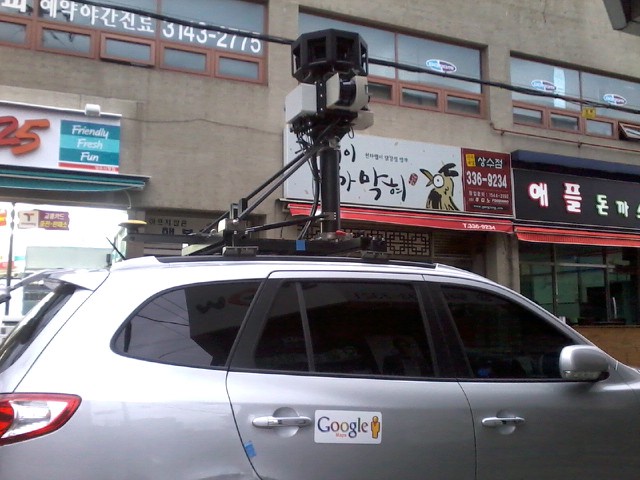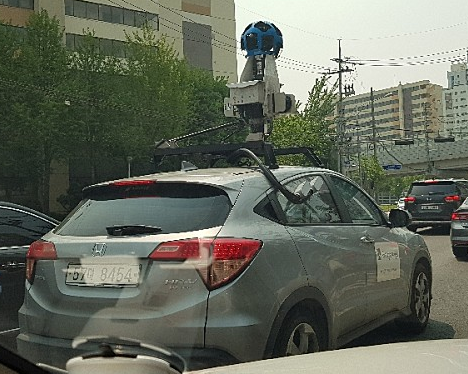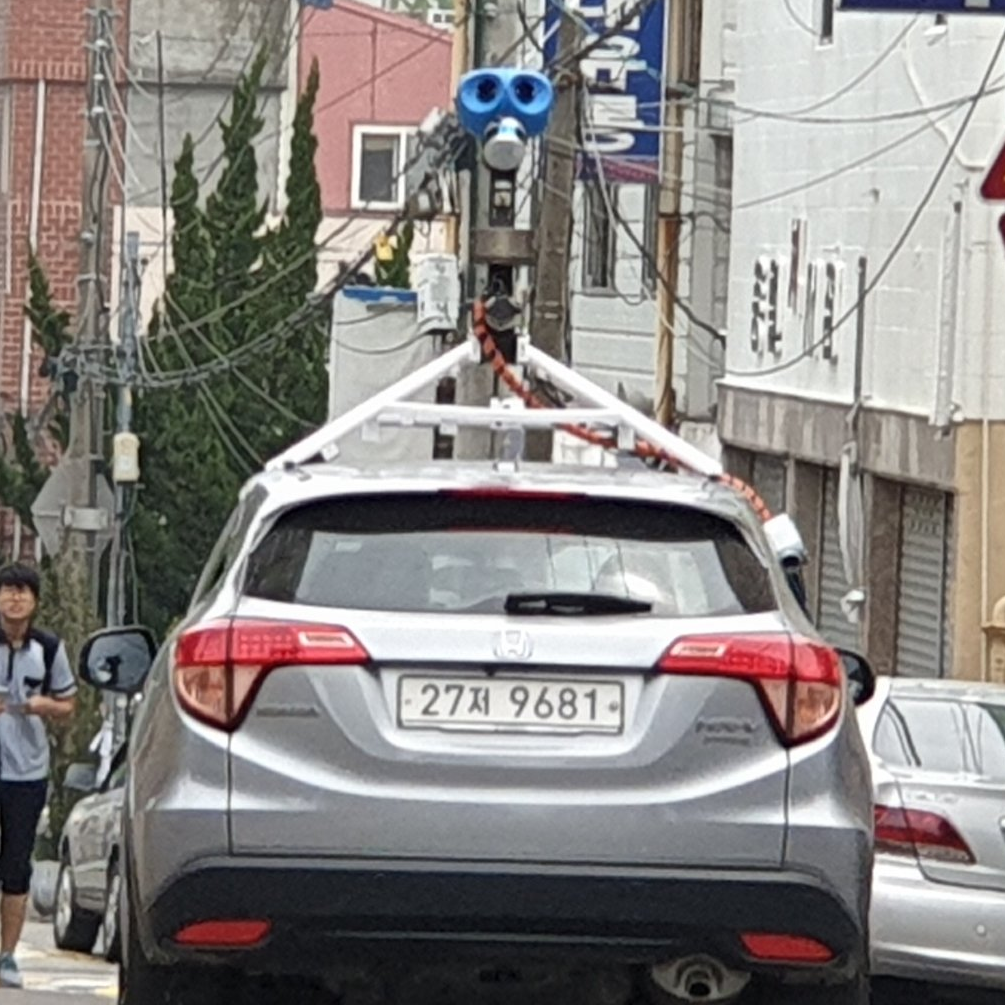History of Google Street View / Korea

In late 2009, Google officially announced that it was driving in Korea with gen 2 cameras.[1] But it was only until 2012 that the company obtained permission to publish some of the coverage.
In early 2012, Google Korea officially announced the launch of images in Seoul and Busan.[2] In late 2014, Google started driving in the cities of Gangneung, Daegu and Daejeon.
In October 2013, Google officially introduced views to part of the exhibits at the National Museum of Korea (Korean: 국립중앙박물관).[3]
In October 2014, Google officially announced that it would photograph various cultural sites and historical museums on Jeju Island through Google Cultural Institute programs.[4] In addition, Google announced with the Jeju Regional Government that it was adding coverage to the island's nature reserves including the Geomun Oreum Volcanic Zone, Sanbangsan Mountain and Jusangjeolli Cliffs, as well as introducing street view to Udo Island.[5]

In late 2014, Google Cultural Institute collaborated with several Korean institutions to provide tripod and trekker views of historical and cultural sites in the country, including the Eumsikdimibang Center (Korean: 음식디미방 체험관).[6]
In 2015, the company started driving in parts of Pohang, Wonju, Asan, Jeonju and Jeju Island. In 2016, several Korean Cultural Heritage institutions collaborate with Google to provide street view of different historical sites in the country such as Namhansanseong Fortress.[7]
In August 2017, Google Korea officially announced trekker views of various trails in 22 National Parks in the country, including Jirisan, Seoraksan and Naejangsan Mountains.[8] In addition, views of historic sites in Seoul such as Gyeongbokgung Palace were published this year.[9]
In August 2018, Google officiated the virtual exhibition on Korean Heritage, including tripod/trolley views of Gyeongju National Museum (국립경주박물관) and National Folk Museum of Korea (국립민속박물관).[10]
History
Note: We take into account the date when the coverage was taken, not the date when it was published.
Source: South Korea's Coverage Dates - Emily Geo Website
| Year | Additions |
|---|---|
| 2009 |
|
| 2010 |
|
| 2013 |
|
| 2014 |
|
| 2015 |
|
| 2016 |
|
| 2017 |
|
| 2019 |
|
| 2020 |
|
| 2021 |
|
| 2022 |
|
Gallery
Gen 2 Cameras

Trekkers

Gen 3 Cameras
Gen 4 Cameras
External Resources
References
"구글 스트리트 뷰 촬영을 우리나라에서도 시작했습니다! " (2009-10-19) Google Korea Blog (in Korean)
Yang Cheol-min (2012-01-25) "구글, ‘스트리트뷰’ 한국 서비스 개시" 서울경제 (in Korean)
"국립중앙박물관 실내를 실제 다니며 감상하는 것과 같은 가상의 체험을 하는 ‘스트리트뷰’ 로 들어가는 첫 페이지 입니다." [Translation: This is the first page to enter Street View where you could virtually walk around the National Museum of Korea interior.] (2013-10-07) National Museum of Korea via Facebook (in Korean)
"구글, 제주 자연문화유산 전세계 알려" [Translation: Google informs the world of Jeju’s natural and cultural heritage] (2014-10-30) 제주환경일보 (in Korean)
"Google Street View comes to Jeju parks" (2014-10-31) Korea.net
Yoo-su, J. "전통요리서 `음식디미방` 구글 통해 세계로" (2014-12-23) [Translation: Traditional cuisine ‘Eumsikdimibang’ goes global through Google] Kbmaeil.com (in Korean)
"남한산성 구글과 손 잡고 가상현실 체험프로그램 개발" [Translation: Namhansanseong joins hands with Google to develop virtual reality experience program] (2016) Namhansanseong World Heritage Center (in Korean)
Hyeonki, Y. (2017-06-22) "구글 스트리트 뷰, 국립공원 360도 파노라마 이미지 제공" [Translation: Google Street View provides 360-degree panoramic images of national parks] DataNet (in Korean)
Mi-ha, J. (2017-06-06) "구글, 스트리튜 뷰에 AI 결합...상점 영업시간까지 파악" Chosun (in Korean)
Jeong-min, L. (2018-06-01) "구글 '코리안 헤리티지', 한국 문화유산 디지털로 전세계에 알린다" [Translation: Google's 'Korean Heritage' promotes Korean cultural heritage to the world digitally] Chosun (in Korean)












